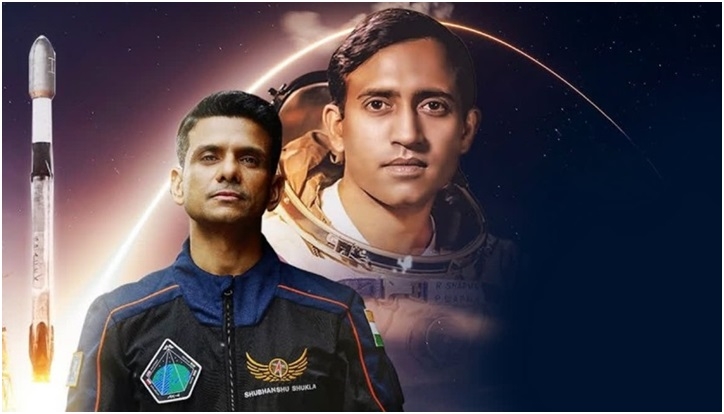India's First Astronaut Rakesh Sharma Recalls 1984 Space Journey As Shukla Launches To ISS

41 years ago, Rakesh Sharma carried the tricolour beyond Earth. He was selected as a cosmonaut for a joint Soviet-Indian space mission and became the first Indian to travel to space. Squadron Leader, when selected, he later achieved the rank of Wing Commander in the Indian Air Force.
Following the launch of the Ax-4 mission carrying Shubhanshu Shukla to space, Sharma congratulated the young astronaut in a video message (posted by PTI).
He said, "Wishing you all the best. To the crew: Godspeed! Spend as much time as you can looking out of the window. Have a fun time, guys."
Later, during a podcast hosted by the Ministry of Defence, Sharma reflected on his journey to space, starting with his selection as a young test pilot in the Indian Air Force for the Indo-Soviet mission in 1984. He describes the intense 18-month training in Russian, his pride in using Indian-made equipment during the eight-day mission, and the beauty of viewing India from space.
Also read: 'Floating, Learning, Thriving' - Shubhanshu Shukla Goes Live From Dragon Capsule, Shares His Space Experience
"I was in the Indian Air Force and I became a test pilot as part of my specialisation... when the selections happened, they chose from amongst test pilots. I was young, I was fit, and I had the qualifications, so I was lucky enough to have been chosen," Sharma said, adding that they were moved to Star City (just outside Moscow) post selection for training, which went on for 18 months.
"It culminated in the Indo-Soviet space flight of 1984. It was an eight-day mission, and during those eight days, we carried out experiments designed by Indian scientists. We used Indian-made equipment and recorded results on apparatus also made by Indians," Sharma added.
When he returned, he went back to the Air Force and resumed his test flying career. After a few years, he moved to Hindustan Aeronautics Limited as their chief test pilot, as the LCA (Light Combat Aircraft) was then ready to fly. He was the chief project pilot for the LCA, the Tejas. Later, after leaving HAL, Sharma joined the IT industry and continued working until the age of 70, which is when he retired.
Speaking about the space journey, he shared how space travel changes one’s worldview, prompting a deep appreciation for Earth and the need to end conflict and preserve the planet. He also discussed watching Earth go through sunrise and sunset every 45 minutes in space, as it takes only 90 minutes to go around the Earth. "Half the orbit is sunlit, while the other half is night," he said.
Reminiscing about how India looked from space, he said, "It was beautiful... because in our country, as you know, we have everything. We’ve got a long coastline; we’ve got the Ghats; we’ve got plains, deserts, tropical forests, hills, and mountains...Himalayas. So many beautiful sights, different colours, different textures."
He encouraged today’s youth to embrace the challenges of space exploration, highlighting that while technology advances, the human experience in space still brings profound mental and emotional shifts. Finally, he expresses hope that India, with its cultural richness and collaborative spirit, will lead not only in space technology but in promoting global unity and shared progress.
Drawing from India’s rich cultural heritage and the philosophy of Vasudhaiva Kutumbakam (the world is one family), he hopes the country will guide the world toward shared progress, harmony, and peaceful exploration.
"Whatever ISRO has done, they have shared data openly with everyone. It is our philosophy—Vasudhaiva Kutumbakam—which means the world is one family. Let us support this ancient belief that reflects our ideology. I hope India will be a modern vanguard in the years to come, guiding the world. And I am confident we will succeed in our mission," Rakesh Sharma said.

